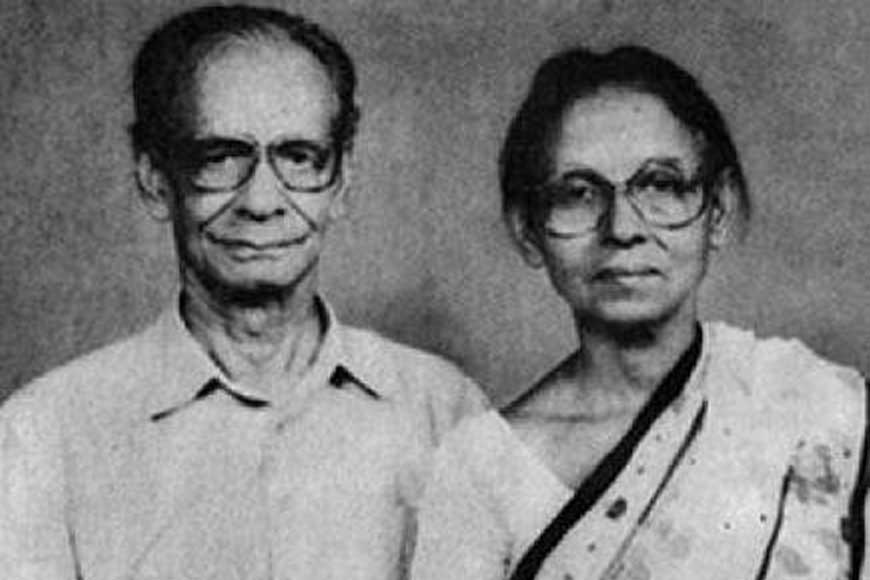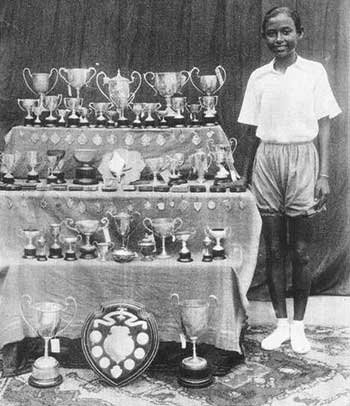Athlete Ila Mitra was tortured in jail instead of sprinting at 1940 Olympics

It was the year of 1940. Not just the year of 12th Summer Olympics at Helsinki, but also a year when Europe was preparing to go to war. India was then under British rule. Kolkata’s deputy accountant general Nagendranath Sen received news through his colonial administration network that his 15-year-old daughter, Ila, was to be sent with the Olympic contingent that would represent British India.
Since 1937, Ila had been a regular face on sports pages of Bengali and English dailies of Kolkata for her triumphs on the track. Eldest of his six children, Ila’s father was passionate about sports himself and invested in his daughter’s sports career, something that the then India could not even dream of. He would often escort Ila for swimming practice to College Square and to her many track competitions around the city. Sen would collect news stories on his daughter and later the whole compilation was found intact.
 In 1937 and 1938, the sports club, Jatiya Juba Sangha, awarded her successive junior championship titles for girls in Bengal. In 1938, the Bengali journal Sachitra Bharat featured the 13-year-old Ila in a collage of senior sports achievers that included the British Indian hockey team, a mountaineer setting off for Tibet, and 10-mile walking champions. But the wheels of fortune turned and the girl in a shirt and soft, crinkly shorts with around 47 trophies to her credit, went on to become one of the most prominent peasant movement leaders in the subcontinent. Ila Sen, one of the best athletes of the Bengal Presidency turned to Ila Mitra, (after marriage) the Tebhaga Movement leader, who was brutally tortured by the very British, who once endorsed her on her Olympic feat.
In 1937 and 1938, the sports club, Jatiya Juba Sangha, awarded her successive junior championship titles for girls in Bengal. In 1938, the Bengali journal Sachitra Bharat featured the 13-year-old Ila in a collage of senior sports achievers that included the British Indian hockey team, a mountaineer setting off for Tibet, and 10-mile walking champions. But the wheels of fortune turned and the girl in a shirt and soft, crinkly shorts with around 47 trophies to her credit, went on to become one of the most prominent peasant movement leaders in the subcontinent. Ila Sen, one of the best athletes of the Bengal Presidency turned to Ila Mitra, (after marriage) the Tebhaga Movement leader, who was brutally tortured by the very British, who once endorsed her on her Olympic feat.
Instead of sprinting in the 1940 Olympics, the gifted athlete was jailed and tortured for joining the famous Tebhaga peasant uprising in Bengal. Several local newspapers and journals described her as the first Bengali woman to get an Olympic call. But no official communication from the government about this remains as the administration probably sensed that the Games would be cancelled due to World War II. Decades later, her grandson, Ritendranath Mitra, who grew up with her wrote in an essay: “In the 90s, when I was growing up, thakuma was not a prominent name. It was much later that I realised her legacy was unique. I wish I had asked her when she was alive. Thakuma would wake me really early, kaak bhorey — as we call that time of dawn when no one is awake except the crows — to go swimming with me at Anderson Club. Till a few days before she passed, this was her routine: she swam and exercised every morning. She believed she had survived the torture she faced because of her fitness.”
1940s was a devastating decade for Bengal with food shortage and rising prices thanks to WWII. In 1942, a cyclone hit Medinipur, leading to further shortage. The official death toll of three million people in the man-made famine of 1943-44 is still raw in the hearts of many. In 1942, Ila graduated with a first class in her Intermediate examination from Bethune school, and enrolled for a Bachelor’s degree in Bengali at Bethune College. The Mahila Atma Raksha Samiti (MARS) of the Communist Party of India (CPI) was formed in 1942, initially to protect women from being trafficked to soldiers of the Allied Forces. Soon, the idea of atma raksha (self-protection) was extended to hunger, poverty and violence. In 1944, Ila’s father went to meet a prospective groom, Ramendranath Mitra, the son of a zamindari family who had decided never to hold a job because he identified himself as a worker of the CPI.
Though Ila identified as a feminist, she agreed to the marriage possibly because of the groom’s political affiliation. In 1947, her mother-in-law Biswamaya Mitra made the unusual decision of staying on in East Bengal, as their estate in Nawabganj fell to the right of the Radcliffe Line declared on 17 August, even as most Hindu Bengali families chose to come away to India.
Ila and Ramendranath worked with their peasant tenants and mobilised them to pay their landlords no more than a third of the harvest instead of half, which was the practice. This was the central demand of the Tebhaga (one-third) movement. In the biography Ila Mitra, Maleka Bano Begum writes: “On January 5, 1950, a police raid in Nachole resulted in the death of four policemen. Ila left the area with her peasant associates, dressed as a Santhal. At Nachole railway station, an alert policeman noticed the watch on Ila’s wrist and arrested her on the charge of murdering four policemen. She was kept nude in a solitary cell and given no food or water. At night, the sub-inspector and other policemen entered her cell and hit her on the head with the butts of their rifles. She bled from the nose and head. Later that night, she was taken to what was possibly the SI’s personal quarters, where her legs were crushed between two lathis and a handkerchief tied around her mouth. Afterwards, the police carried Ila to her cell. There, the SI was waiting. He ordered four freshly boiled eggs. “Now she will speak,” he said. When the eggs arrived, four or five policemen held her flat on the ground and one of them placed a steaming egg inside her vagina. Ila lost consciousness.
She awoke to the SI and his colleagues kicking her in the stomach. Then they pierced her right ankle with a nail. Later, four or five men held her down and a policeman raped her. She lost consciousness again. This continued for four days before Ila, burning with fever, was taken to Nawabganj jail. The jail warden there, O.C. Rahman, was her batchmate from Calcutta University. They had met in the heady days of famine relief. He arranged for a doctor: she was running a temperature of 105 degrees. Although she remained in jail, she at least received medical treatment. Later, Ila would say she survived custodial torture and managed to walk again by 1956 because of her training as an athlete. The torture left her with a slight limp for the rest of her life.”
“A sportsperson’s nationalism is a defining identity, like a poet’s philosophy or an artist’s muse. But sportsmanship also rises above national concerns. The most important thing in the Olympic Games is not to win but to take part, just as the most important thing in life is not the triumph but the struggle. The essential thing is not to have conquered but to have fought well,” Pierre de Coubertin, the founder of the modern Olympics, had once said. The missed Olympian Ila Mitra probably proved that through her own life and its struggles.
(Source: Ami Subhas Bolchhi)











